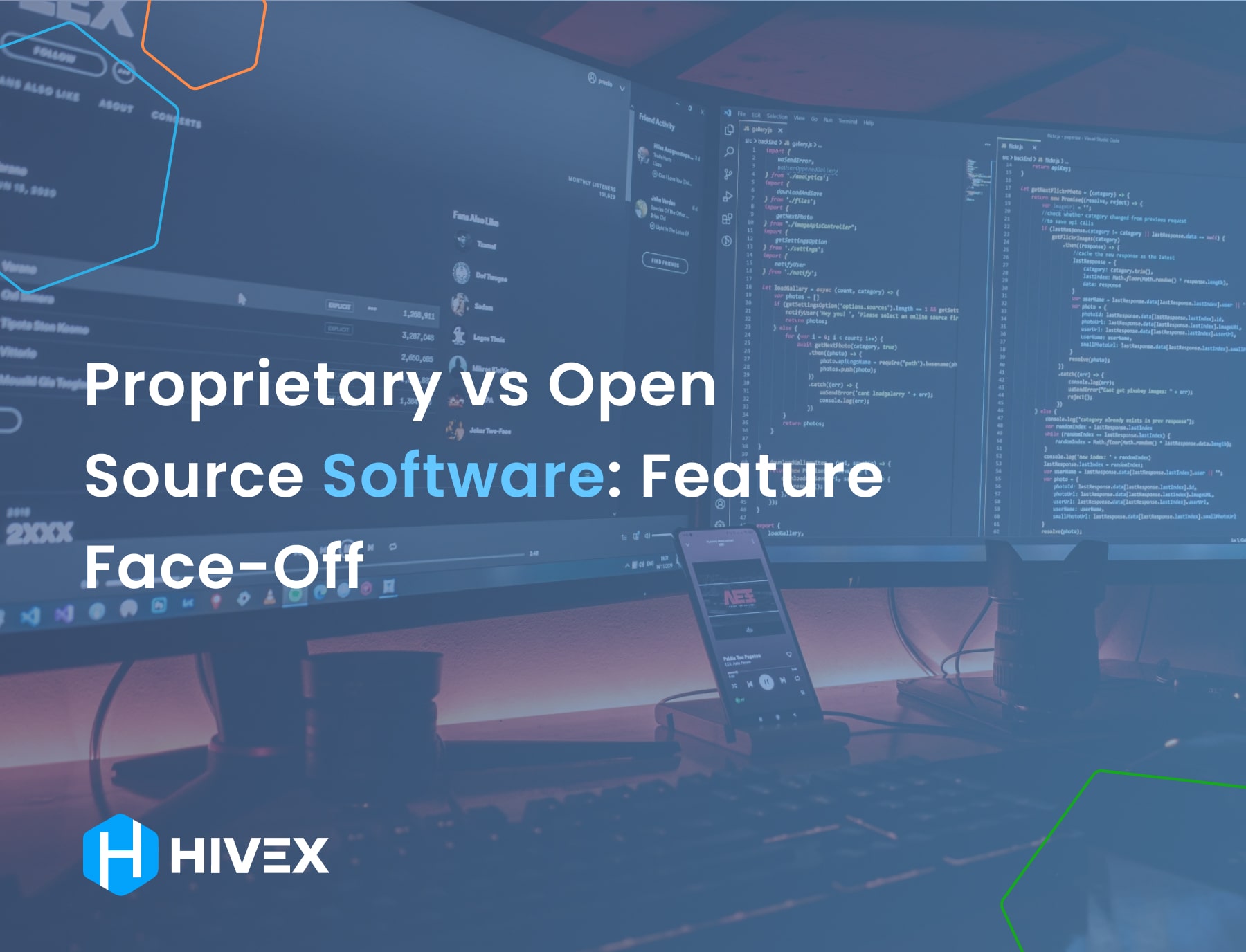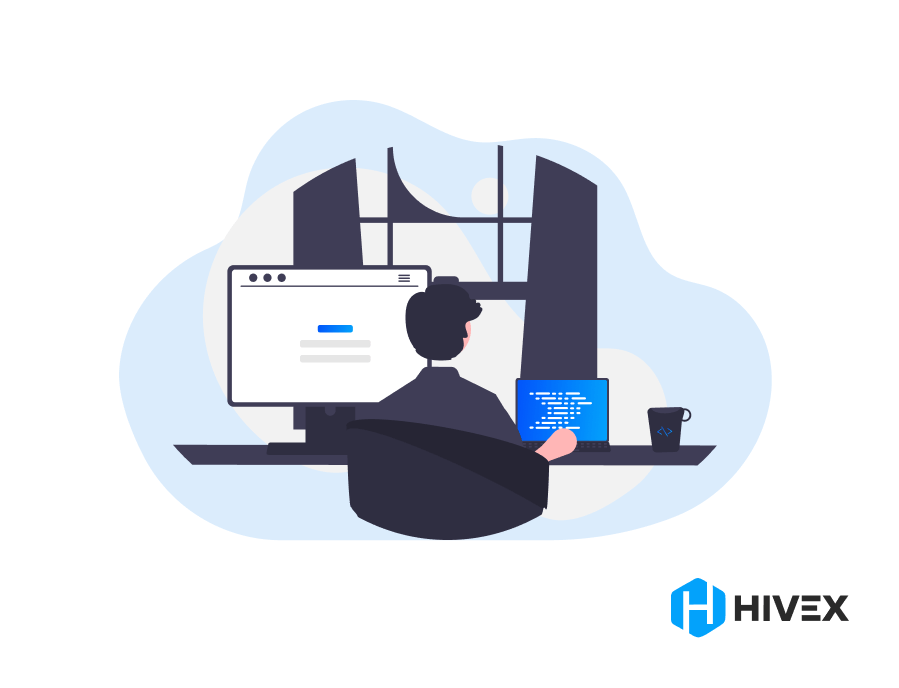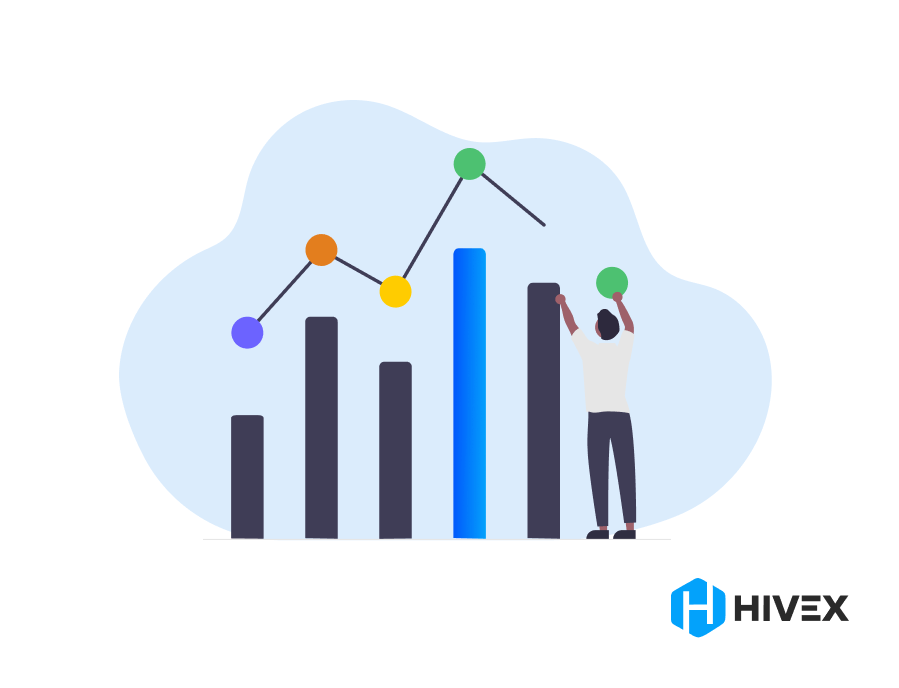Proprietary vs Open Source Software: Feature Face-Off

The debate between proprietary software and open-source software continues to gain momentum. Choosing between these options can have significant implications for individuals, businesses, and organizations.
Let’s dive deep into the differences between proprietary and open-source software, as well as their benefits and drawbacks.
Quick Navigation
Definition: Open Source and Proprietary Software

- Proprietary – is a type of software that is developed and owned by a single organization, such as a company. This type of software is often governed by restrictive licenses that limit users’ rights and access to the software’s source code.
- Open-source – is software whose source code is made freely available for anyone to view, modify, and distribute. It encourages collaborative improvement from its users and developers, promoting transparency and community development.
Proprietary software usually includes customer support services offered by the owning company. This support can be crucial for users needing quick help or problem resolution. However, dependence on a single provider for support might restrict response times and flexibility.
In contrast, open-source software thrives on a robust network of developers and users who offer assistance via forums, documentation, and more. This community-driven support system often fosters innovative solutions and a collaborative atmosphere.
The transparent nature of open-source software also enables deeper customization and adaptability, appealing to those prioritizing flexibility and control over their software solutions.
Examples of Open Source and Proprietary Software
Understanding open-source and proprietary software is easier by looking at specific examples. Let’s look at some that illustrate these ideas.
Proprietary Software: Microsoft Office

Microsoft Office is a suite of productivity applications including Word, Excel, PowerPoint, and Outlook.
- Licensing: to use Microsoft Office, individuals and organizations must purchase licenses, which can vary from single-user licenses to enterprise-wide agreements.
- Usage restrictions: the licenses typically restrict how the software can be used, such as the number of devices on which it can be installed or the prohibition against sharing the software with others.
- Support and updates: access to customer support and regular software updates are provided, which help maintain security and add new features, but only within the licensing agreement.
Open Source Software: Mozilla Firefox

Mozilla Firefox is a free web browser known for its speed and flexibility.
- Open access: anyone can download and use Firefox without any cost. Open-source nature also means that its source code is accessible for anyone to modify, leading to enhancements and personalized versions.
- Community-driven: Firefox is supported and developed by a global community of contributors. This community develops the browser and ensures its security.
- Customization: users benefit from extensive customization options through add-ons and extensions, which are often developed by the community and allow for personalized browsing experiences.
Additional examples
| Proprietary Software | Open Source Software |
|---|---|
| Adobe Photoshop | Linux OS |
| Microsoft Windows | WordPress |
| Autodesk AutoCAD | Mozilla Thunderbird |
| Oracle Database | GIMP |
| Adobe Illustrator | LibreOffice |
| VMware Workstation | Jenkins |
| Microsoft SQL Server | MySQL |
| Apple Final Cut Pro | VLC Media Player |
| Symantec Norton | GNOME Desktop Environment |
| SAP ERP | Blender |
Revenue Generation in Open Source vs. Proprietary Software

It’s a common myth that open-source software doesn’t generate revenue. In reality, there are multiple ways that open-source projects can be profitable.
Here’s how both software models create revenue streams:
Open Source Software Revenue Strategies
- Premium support services: while the software itself is free, many projects offer advanced support services for a fee. This includes 24/7 technical support, customized troubleshooting, and more.
- Consulting and customization: developers and companies can earn by providing expert consultancy for customizing and integrating open-source software according to specific organizational needs.
- Complementary products and services: Selling software add-ons, plugins, or additional features that enhance the core offerings can also be a lucrative revenue stream. Furthermore, hosting services or managed services are common complementary offerings.
Proprietary Software Revenue Models
- Licensing fees: the primary source of income for proprietary software is the fees charged for the right to use the software. This can be a one-time purchase (perpetual license) or a recurring subscription.
- Upgrade charges: charging for major updates or new software versions is another way to generate revenue. Users often pay for upgrades to access additional features and improvements.
- Direct sales of additional services: many proprietary software companies also sell related services, such as data storage, enhanced security features, or enterprise solutions, creating an integrated ecosystem around their core products.
In conclusion, while revenue models differ, both open-source and proprietary software can be financially successful. Open source leverages community and flexibility, offering a range of services and enhancements for revenue.
Proprietary software, with its controlled environment, relies on direct sales and recurring charges, ensuring steady income and funding for further innovation.
Support and Maintenance: Open Source vs. Proprietary Software

Choosing between open-source and proprietary software often involves considering the type of support and maintenance each provides. Here’s a closer look at the key differences:
Open Source Community Support
- Collaborative platforms: open source projects thrive on platforms like GitHub, where users and developers collaborate on solutions and enhancements.
- Forums and mailing Lists: a vast amount of knowledge is shared in user-driven forums and mailing lists, providing a rich resource for troubleshooting and learning.
- Volunteer expertise: the community often includes highly skilled enthusiasts and professionals who contribute their expertise for the love of technology and community spirit.
Formal Support for Proprietary Software
- Dedicated support teams: companies offering proprietary software typically maintain trained support teams who assist as part of service packages.
- Service level agreements (SLAs): proprietary software often comes with clear SLAs, which guarantee certain levels of service, response times, and issue resolution metrics.
- Customized assistance: for enterprises, proprietary software vendors often offer customized support services tailored to specific business needs, ensuring that critical issues are resolved promptly.
Which one is better for users?
For users requiring robust, predictable support, especially in critical or enterprise environments, proprietary software may be preferable due to its structured support mechanisms and accountability.
On the other hand, open-source software might appeal more to those who value community engagement, peer-to-peer help, and a wider range of user-driven solutions.
The choice depends on the user’s specific needs for support reliability, speed, and the type of interaction they prefer with their software providers.
Read also: How does a software development plan work?
Cost Comparison: Proprietary vs. Open Source Software

If budget constraints are a concern, knowing the costs of proprietary and open-source software is crucial.
Proprietary Software Costs
Proprietary software typically involves purchasing licenses. For individual users, this might mean a one-time purchase or a subscription fee that needs to be renewed periodically.
For businesses, the cost can escalate quickly, especially if licenses are required for multiple users.
For example, consider a software suite like Adobe Creative Cloud which requires a monthly subscription that can add up to a significant annual expense.
Also, businesses might have to pay for upgrades. Unlike updates, which are usually free, upgrades that include major enhancements to the software often come at an additional cost.
This is common in software like enterprise resource planning (ERP) systems, where moving to a newer version can be almost as expensive as the initial purchase.
Open Source Software Costs
Open-source software is generally free to download and use. There are no license fees, so spending goes down immediately.
However, while the software itself is free, there might be costs associated with it. For instance, if your team lacks the technical know-how to implement and maintain an open-source tool, you may need to hire external experts or train your staff, which involves time and money.
Additionally, while basic community support is free, you might opt for paid support services to ensure you have access to prompt, professional help when needed. These services are often offered by companies that specialize in supporting specific open-source software.
How to choose
When considering what software to choose, think about not only the initial costs but also long-term expenses.
Proprietary software can be a significant investment but offers predictability and dedicated support, which can be crucial for businesses requiring robust, reliable software solutions.
Open-source software, while potentially requiring more initial legwork for customization and learning, can significantly reduce costs due to no licensing fees. This makes it a potentially attractive option for startups and small businesses that prioritize flexibility and cost efficiency.
Take into account your organization’s needs, your team’s expertise, and the overall cost of ownership.
You may also like: A comprehensive guide to capacity planning
Final Thoughts and Considerations
As we explore the difference between open source and proprietary vs open source software, it’s clear both play a crucial role in shaping technology’s future. Each model offers unique benefits, from highly customizable environments to user-friendly interfaces, demonstrating the dynamic nature of computer software.
Proprietary software support is often valued for its robustness, with support open standards that ensure users receive faster fixes and updates.
Companies like Adobe, known historically for products like Adobe Flash Player, provide extensive professional services and maintain a valid and authenticated license system that safeguards their software.
This model, prevalent in commercial software, ensures that only the company that owns the software can distribute copies, offer bug fixes, and manage updates.
On the other hand, open-source projects thrive on collaboration and innovation. Open source licenses allow users to modify and fix bugs independently, contributing back to the community which can lead to faster fixes.
This aspect of open-source software is particularly attractive to non-profit organizations and educational institutions, which often lack the budget for hefty licensing fees but possess the technical expertise to adapt the software to their needs.

Software development within the open-source realm is driven by community forums and contributions from users worldwide. It ensures that software remains highly customizable and aligned with users’ needs. Additionally, the absence of a licensing fee opens up opportunities for for-profit entities and individuals alike to experiment and innovate without financial constraints.
Proprietary software often comes with limited customization options.
While this might be seen as a drawback, it benefits users who require stable, out-of-the-box solutions with commercial support.
SaaS platforms typically run on proprietary frameworks, offering tailored solutions that come with the promise of commercial support and regular maintenance.
Understanding and leveraging the strengths of both source software and proprietary models is key.
Organizations must assess their technical infrastructure needs against what each type of software offers.
For instance, operating systems are foundational, requiring stable and secure software, which might lead some to choose proprietary solutions for their valid license and security features.
In the end, the synergy between open source and proprietary software can lead to a more inclusive, innovative, and integrated technological landscape. Whether through productivity software for businesses or operating systems that power our devices, the collaboration between these two worlds is essential for driving forward the next wave of digital transformation.
Read also: Software developer salaries statistics


